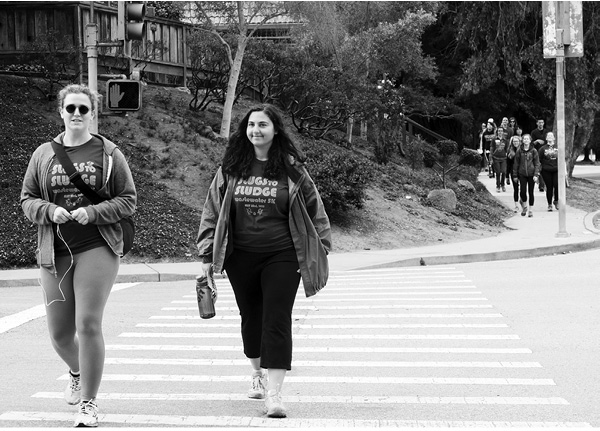
WASTEWATER WALK
first performed on May 23, 2015
University of California, Santa Cruz to Neary Lagoon Wastewater Treatment Facility, Santa Cruz, CA
performed once in 2015
FICTILIS / TIMOTHY FURSTNAU, ANDREA STEVES
Rosemary Applen, Brooke Basile, Bailey Clark, Jill Ganley, Zoe Manoguerra, Jessica Mosleh, Karina Maria Tavares Perez
Oakland, CA / Santa Cruz, CA
473243236i473243236n473243236f473243236o473243236@473243236f473243236i473243236c473243236t473243236i473243236l473243236i473243236s473243236.473243236c473243236o473243236m
fictilis.com
WASTEWATER WALK
FICTILIS / TIMOTHY FURSTNAU, ANDREA STEVES
“Wastewater Walk” is a series of performative walks which lead participants along the paths that human waste travels along invisible infrastructure routes to wastewater treatment facilities, in an effort to raise awareness of the water footprint, unsustainable design, inequitable access, and psychological repercussions of traditional human waste sanitation.
The walks are an attempt to tie awareness to lived experience in the physical landscape, so that information is not just learned, but felt, embodied, and remembered. Going beyond standard forms of presentation via text, charts, graphics, and other images that only visualize information, each walk embodies information in the movements and actions of human bodies, and embeds it in our surroundings, turning information into rituals and symbolic forms that can be repeated and remembered.
The walk pictured, “Wastewater 5K,” followed the path of wastewater from the UC Santa Cruz campus to the Wastewater Treatment Plant at Neary Lagoon – a distance of exactly 5 km. Dubbed “Slugs to Sludge,” the walk was created as a playful way to raise awareness of water conservation in a drought-stricken community and to advocate for action on ecological sanitation on the campus and beyond. Along the way, 80 participants learned about the poetics and politics of human waste as they traveled through several different landscapes that are hybrids of wilderness and human infrastructure.
Organized by FICTILIS and seven undergraduate arts researchers, the event was also staged as a kind of pilgrimage to the commons of the treatment plant, which represents the commingling of the “movements” of the 80,000 people it serves. Participants were invited to speak openly about their bathroom behavior, tell jokes, and play games in an effort to get more in touch with each other and the landscapes we (and our waste products) inhabit. Because the walk began on campus and ended at a public park, it represented a bridging of the campus-City divide that is rare among public events in Santa Cruz. The event highlighted this divide—as human waste crosses certain physical borders, its ownership actually changes hands, and during treatment, and post-treatment, it may journey even farther and be passed between several other municipalities and corporations. Following this process offered a glimpse into the political complexities behind invisible material flows.